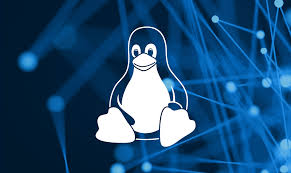Cloud computing and virtualization are two interconnected concepts that have revolutionized the way computing resources are provisioned, managed, and utilized. Linux plays a significant role in both areas, providing a robust and flexible operating system for cloud computing and virtualization environments. Here’s an introduction to cloud computing, virtualization, and Linux in the cloud:
- Cloud Computing:
Cloud computing refers to the delivery of computing resources, including servers, storage, databases, networking, and software, over the internet. Instead of owning and managing physical infrastructure, users can access these resources on-demand, paying only for what they use. Cloud computing offers scalability, cost-efficiency, flexibility, and accessibility, making it popular for businesses and individuals alike.Key characteristics of cloud computing include:- On-demand self-service: Users can provision and manage resources automatically without human intervention.
- Broad network access: Resources are accessible over the network via standard protocols and devices.
- Resource pooling: Computing resources are shared and dynamically allocated to multiple users.
- Rapid elasticity: Resources can be quickly scaled up or down to meet changing demands.
- Pay-as-you-go: Users are billed based on their actual resource consumption.
- Virtualization:
Virtualization is a technology that enables the creation of virtual instances or environments within a physical computing infrastructure. It allows multiple operating systems (OS) or applications to run simultaneously on a single physical server, each within its isolated virtual environment. Virtualization provides flexibility, resource optimization, ease of management, and improved hardware utilization.Hypervisors, also known as virtual machine monitors (VMMs), are software or firmware components that enable virtualization. They create and manage virtual machines (VMs), which are complete and independent instances of an operating system running on virtualized hardware.Linux-based hypervisors, such as KVM (Kernel-based Virtual Machine) and Xen, are widely used in cloud computing and virtualization environments. These hypervisors leverage the Linux kernel’s capabilities to provide efficient and secure virtualization solutions. - Linux in the Cloud:
Linux is the dominant operating system in the cloud computing landscape. It offers several advantages that make it well-suited for cloud environments:- Open-source nature: Linux distributions, such as Ubuntu, CentOS, and Debian, provide robust and scalable platforms for cloud deployments. The open-source ecosystem promotes flexibility, customization, and community-driven innovation.Stability and performance: Linux is known for its stability, security, and performance characteristics. It can handle high workloads efficiently, making it ideal for cloud applications.Containerization: Linux-based container technologies like Docker and Kubernetes have gained significant popularity in cloud environments. Containers provide lightweight, isolated runtime environments for applications, enabling efficient resource utilization and scalability.Automation and orchestration: Linux provides a rich ecosystem of automation and orchestration tools, such as Ansible, Puppet, and Chef. These tools simplify the management and configuration of cloud resources, enabling scalable and repeatable deployments.Compatibility and interoperability: Linux supports a wide range of cloud platforms, including public clouds like Amazon Web Services (AWS), Microsoft Azure, and Google Cloud Platform (GCP). It also enables private cloud setups using platforms like OpenStack.
It’s important to note that this is just an overview, and both cloud computing and virtualization are vast topics with many intricate details and advanced concepts.
SHARE
